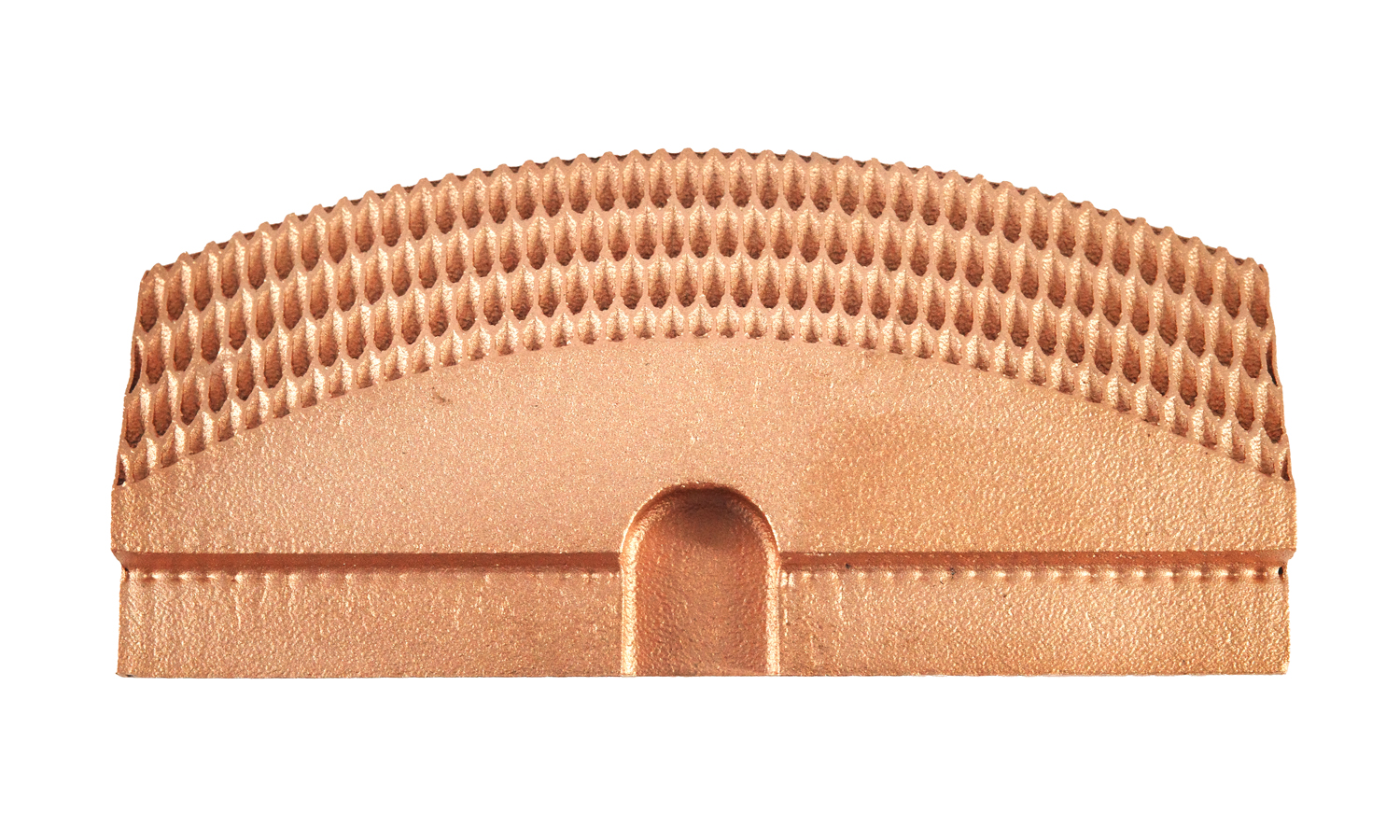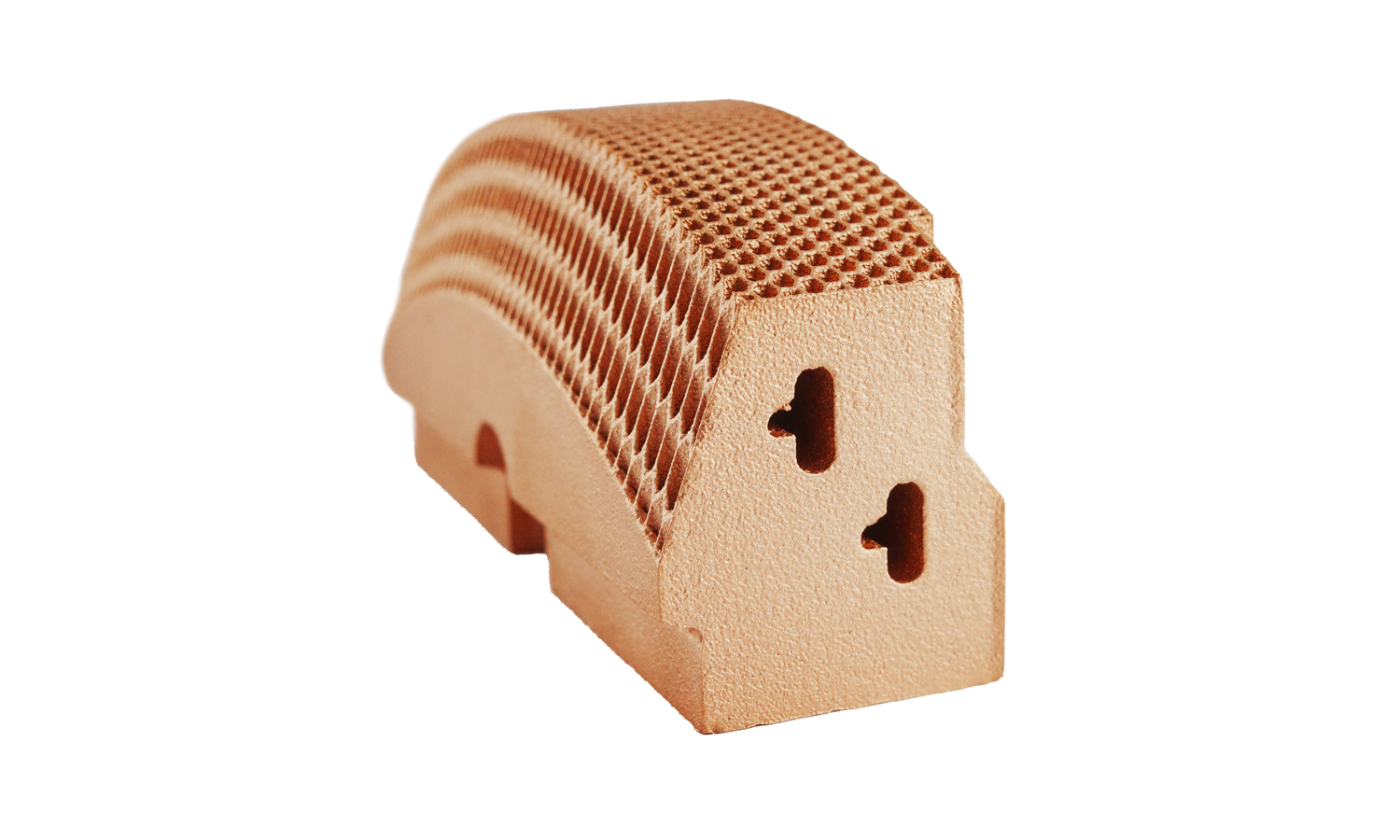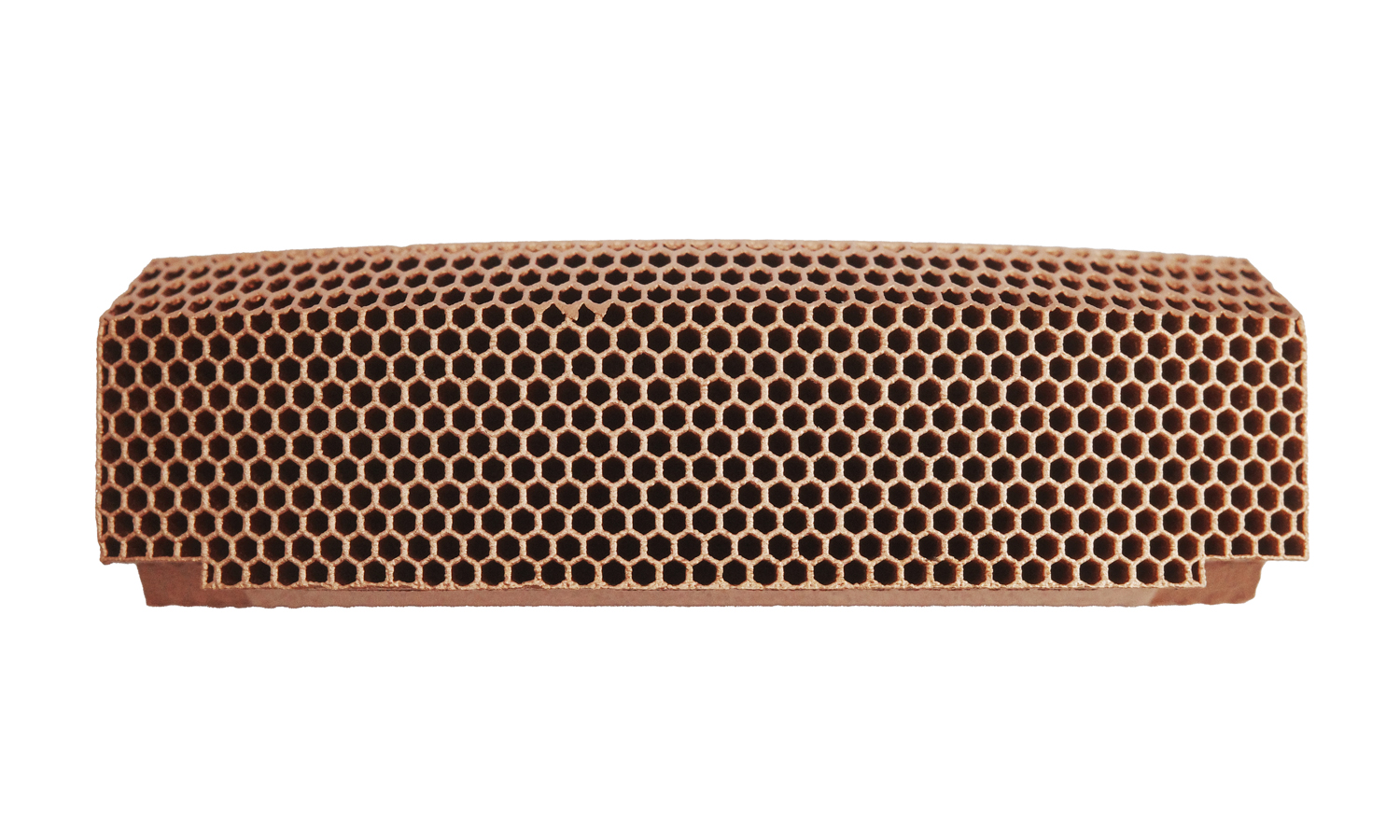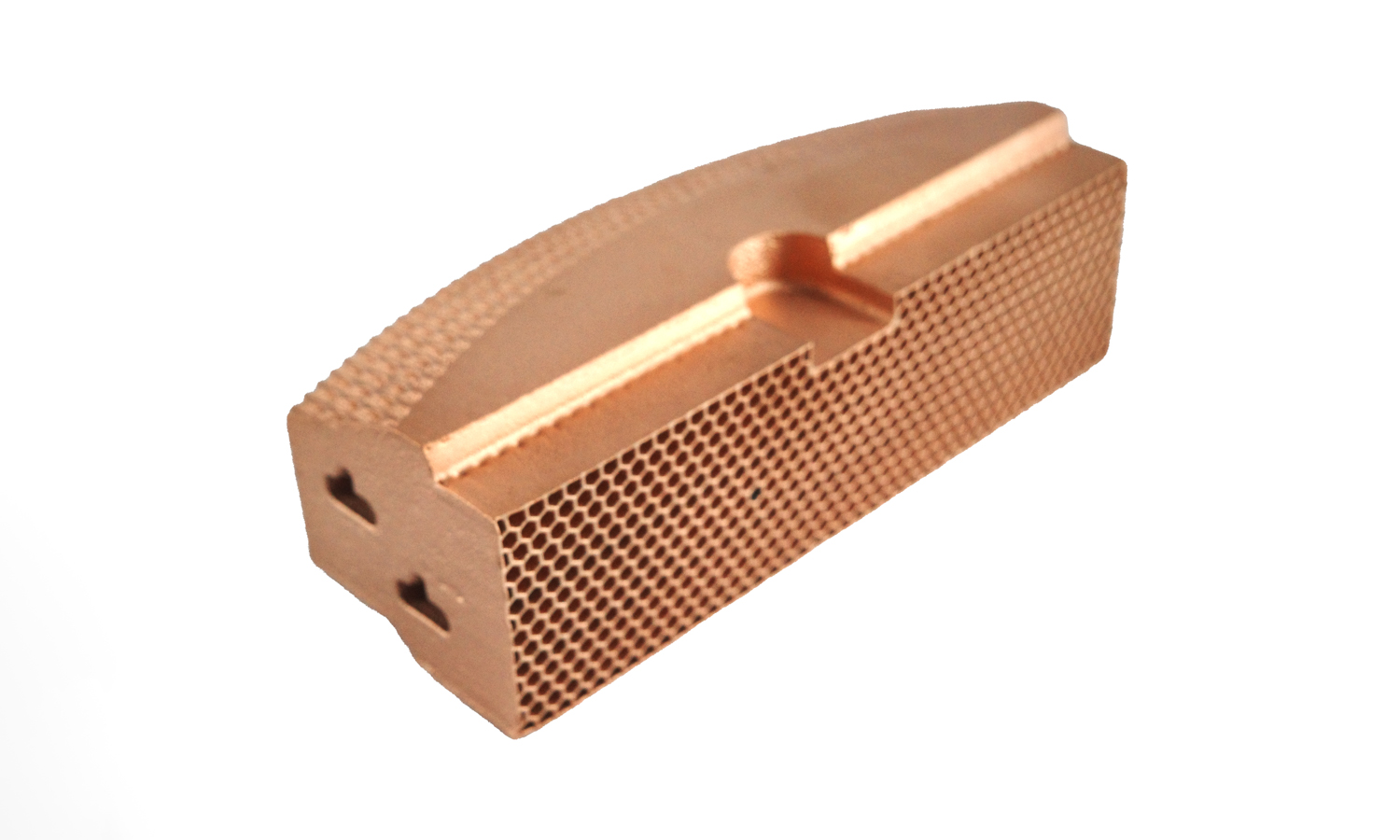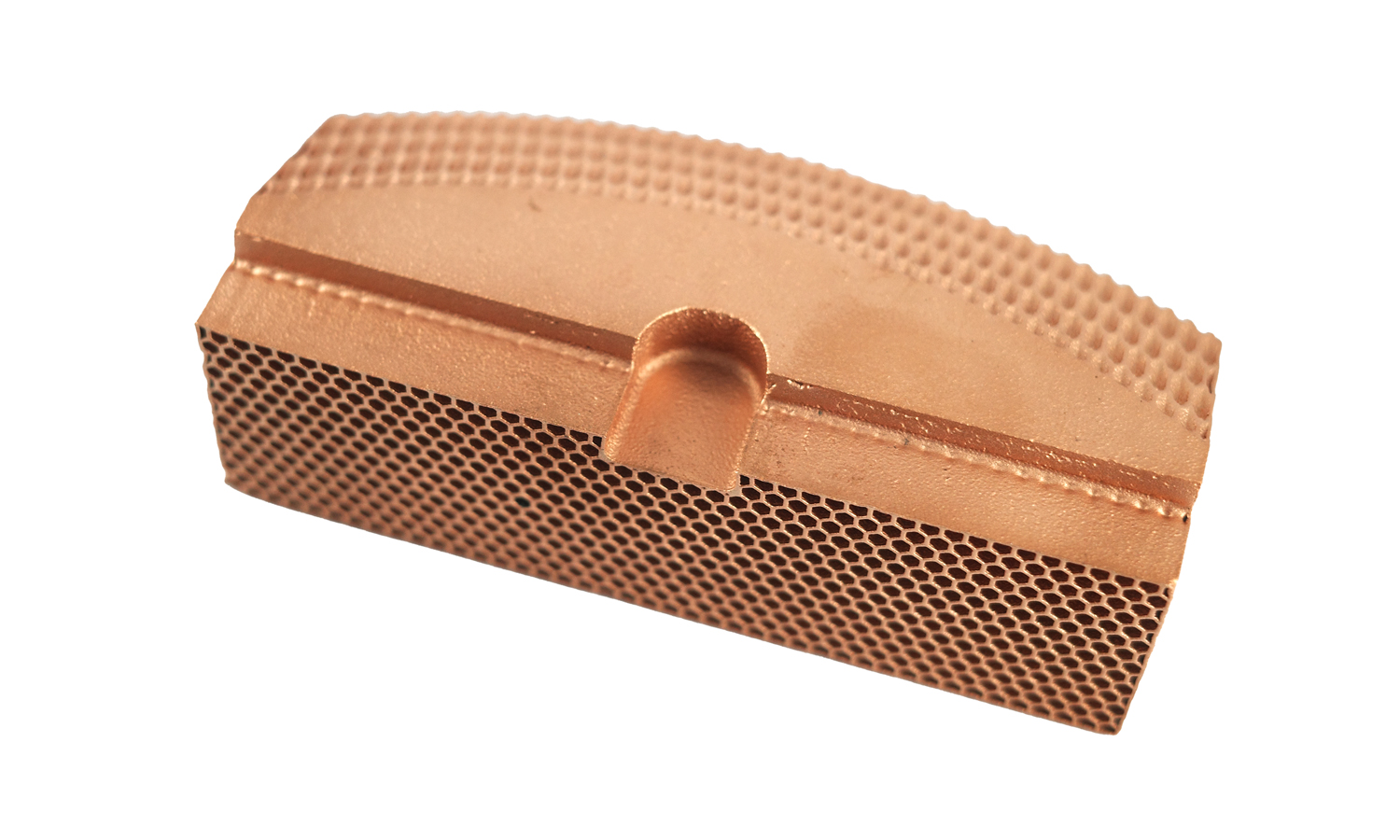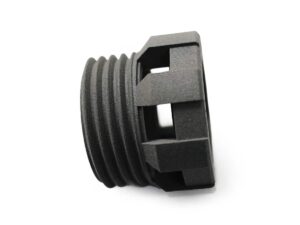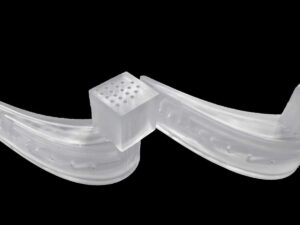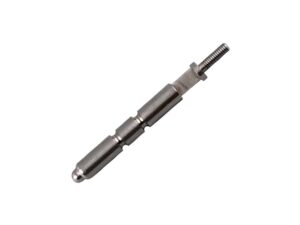Material Metal
Quantity 1 pcs
Price Range $1-100
Lead Time 3 workdays
Gallery
About Project
In today’s world of ever-increasing power densities and miniaturized electronics, efficient thermal management is paramount. Traditional manufacturing methods often struggle to create heat sinks with the complex geometries needed to maximize heat dissipation. Enter Selective Laser Melting (SLM) 3D printing, a revolutionary technology that allows us to create pure copper heat sinks with unparalleled design freedom and performance.
Designing for Optimal Heat Dissipation
The heat sink featured in the image showcases the power of SLM. Its design is meticulously crafted for optimal thermal performance:
- High-Density Pin Array: The top surface boasts a dense array of closely spaced pins. This intricate structure dramatically increases the surface area exposed to air, promoting convective heat transfer. The precision of SLM allows for the creation of these fine pin structures, which would be challenging or impossible to produce with traditional methods.
- Curved Top Surface: The convex curve on the top of the pin field is not merely aesthetic. It’s designed to optimize airflow and potentially interface with a specific component. This customization is a hallmark of SLM, enabling designers to tailor heat sinks to their exact needs.
- Central Cavity and Stepped Base: The central rectangular cavity and the concentric, stepped base are crucial for precise mounting and even pressure distribution onto the component being cooled. This ensures optimal thermal contact and maximizes heat transfer.
- Pure Copper Advantage: The use of pure copper, known for its exceptional thermal conductivity, further enhances the heat sink’s performance. This allows for rapid and efficient heat dissipation, keeping sensitive components operating within safe temperature ranges.
The Green Laser Advantage
FacFox leverages cutting-edge green laser technology in our SLM process for pure copper. This advanced approach offers several key benefits:
- Enhanced Copper Printability: Pure copper’s high reflectivity and thermal conductivity pose significant challenges for traditional 3D printing lasers. Our 532nm green laser overcomes these limitations by offering a higher absorption rate in copper, leading to more efficient melting and superior part density.
- Superior Detail and Surface Finish: The finer focus of the green laser allows for the creation of intricate details and smoother surface finishes, crucial for maximizing the effectiveness of the pin array and ensuring proper mounting.
- Wider Process Window: Green lasers provide a broader range of workable parameters, simplifying process development and allowing us to efficiently produce high-quality copper heat sinks.
Beyond the Image
This heat sink is just one example of the complex geometries and high performance achievable with SLM 3D-printed pure copper. The technology is ideal for:
- Electronics Cooling: From high-power CPUs and GPUs to LEDs and other heat-generating components.
- Aerospace and Defense: Meeting the demanding thermal management needs of critical applications.
- Medical Devices: Utilizing copper’s antimicrobial properties in specialized implants.
- Custom Industrial Applications: Tailoring heat sinks to the unique requirements of any industry.
Need a custom thermal solution? FacFox offers high-quality pure copper 3D printing services using our advanced green laser technology. Contact us today to discuss your project and discover the possibilities of additive manufacturing for thermal management. Let us help you push the boundaries of what’s possible!
Solution
- Step 1: Design Preparation.┬ĀA 3D model of the heat sink was created using CAD software. The design was then optimized for SLM manufacturing and sliced into layers.
- Step 2: Powder Bed Preparation. A thin layer of pure copper powder was spread evenly across the build platform.
- Step 3: Laser Melting.┬ĀA high-precision 532nm green laser was used to selectively melt the copper powder according to the sliced design. The laser beam was precisely guided across the powder bed, fusing the particles together to form the first layer of the heat sink.
- Step 4: Layer-by-Layer Construction.┬ĀThe build platform was lowered by a precise increment, and another layer of copper powder was spread. The laser melting process was repeated, building the heat sink layer by layer.
- Step 5: Cooling and Solidification.┬ĀAfter each layer was scanned, the molten copper was allowed to cool and solidify.
- Step 6: Build Chamber Lowering.┬ĀThis process was repeated until the entire heat sink was built.
- Step 7: Removal from Build Platform.┬ĀOnce the build was complete, the heat sink was carefully removed from the build platform.
- Step 8: Excess Powder Removal.┬ĀUnfused copper powder surrounding the heat sink was removed, often with the aid of brushes or compressed air.
- Step 9: Support Structure Removal.┬ĀIf support structures were needed during the printing process for overhanging features, they were removed. This was typically done using cutting tools or by breaking them away at designated weak points.
- Step 10: Post-Processing.┬ĀDepending on the application requirements, additional post-processing steps might have been performed. These could include surface finishing (e.g., polishing or blasting), heat treatment to relieve stress or improve material properties, or cleaning to remove any residual powder.
- Step 11: Inspection and Quality Control.┬ĀThe finished heat sink was inspected for dimensional accuracy, surface quality, and any defects. Quality control measures were employed to ensure the heat sink met the required specifications.
